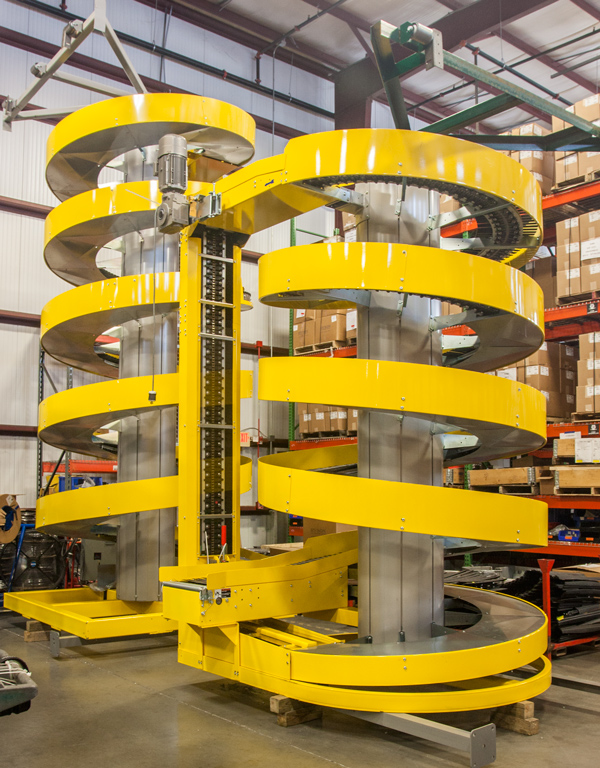Ryson’s modular spiral design has more benefits than just being able to quickly and economically reconfigure the spiral for changes in system layouts. It also allows the spiral to accommodate site specific needs like seismic requirements.
 Seismic requirements vary from site to site so the solution is not one size fits all. Each spiral is custom engineered based on its height, weight, weight of the loads being handled and the seismic accelerations that the spiral may experience at that specific site.
Seismic requirements vary from site to site so the solution is not one size fits all. Each spiral is custom engineered based on its height, weight, weight of the loads being handled and the seismic accelerations that the spiral may experience at that specific site.
One area of primary concern is the base frame of the spiral and its connection to the floor. In high load applications the size and shape of the base frame is changed to accommodate the larger loads. In addition, the size and quantity of footpads and anchors may be changed to accommodate the larger loads.
For spirals in non-seismically actively locations, the anchor bolts in the foot pads are primarily for fixation of the spiral. In areas that may experience earthquakes the anchors ensure that the spiral will not create a hazard during a seismic event. For these installations, the number and size of anchors are defined by local and national codes based on the spiral’s height, weight and other parameters.
There are other features of the spiral that help it to withstand seismic loads. The center column of the spiral is a honeycomb design which reduces its weight and increases its stiffness. Additionally, the snap together design of the center column dissipates energy as it flexes and dampens vibrations. Most of the connections in the spiral are bolted not welded, reducing the chances of cracking and catastrophic failure and simplifying inspection after a seismic event to ensure structural integrity.
Conforming to site specific seismic requirements is another instance where Ryson’s modular spiral design provides a customizable economical solution to vertical transportation needs. Click here for more information on the modularity of Ryson Spirals.









